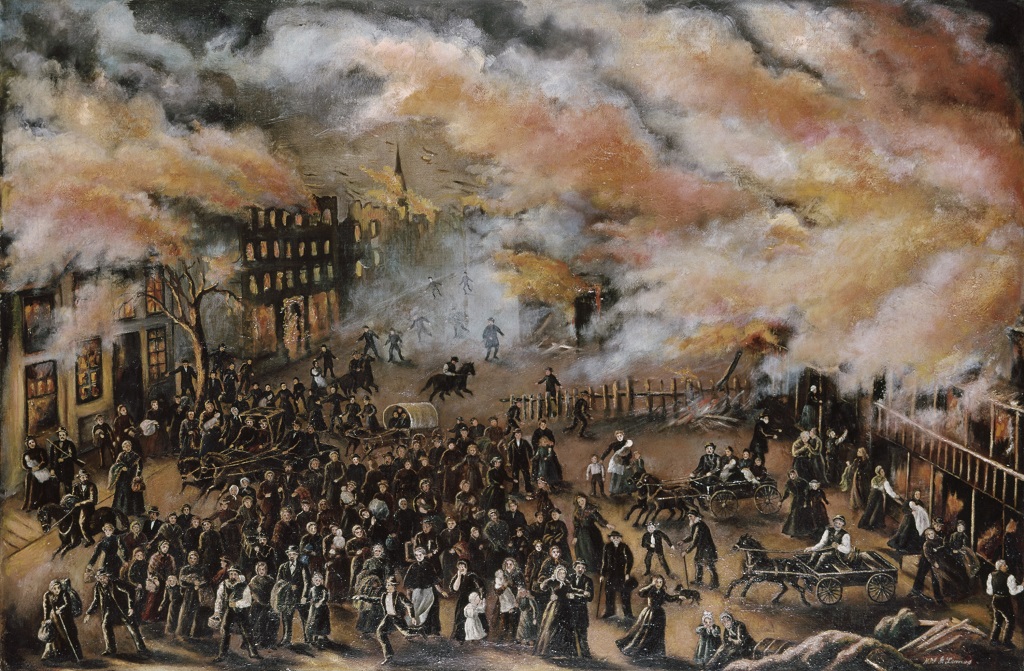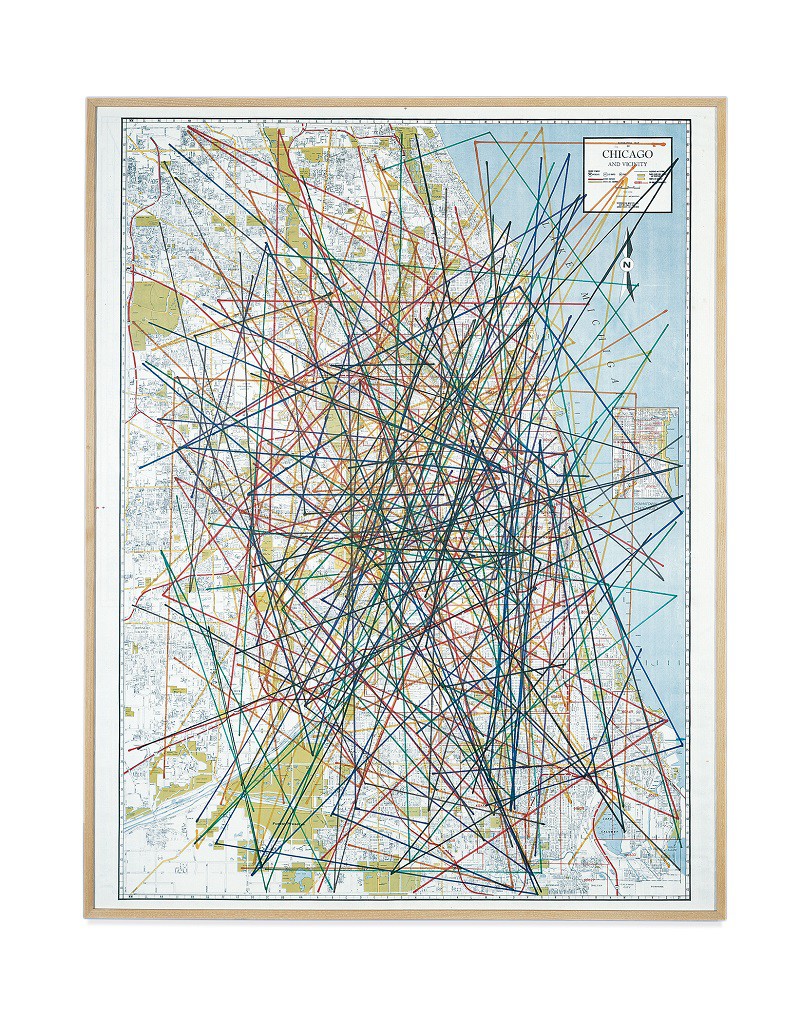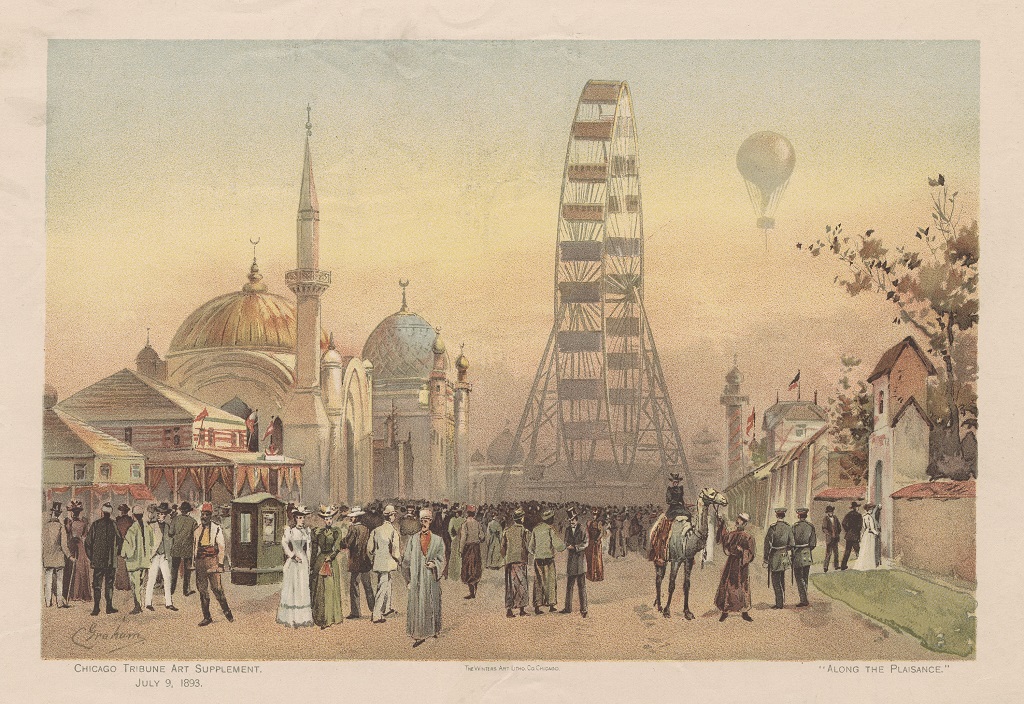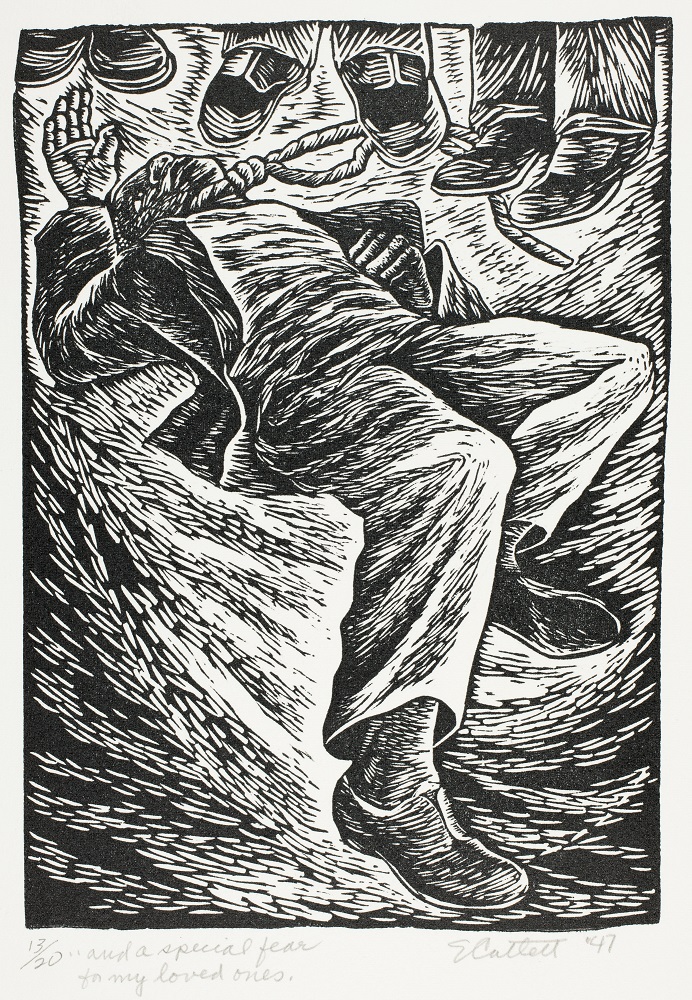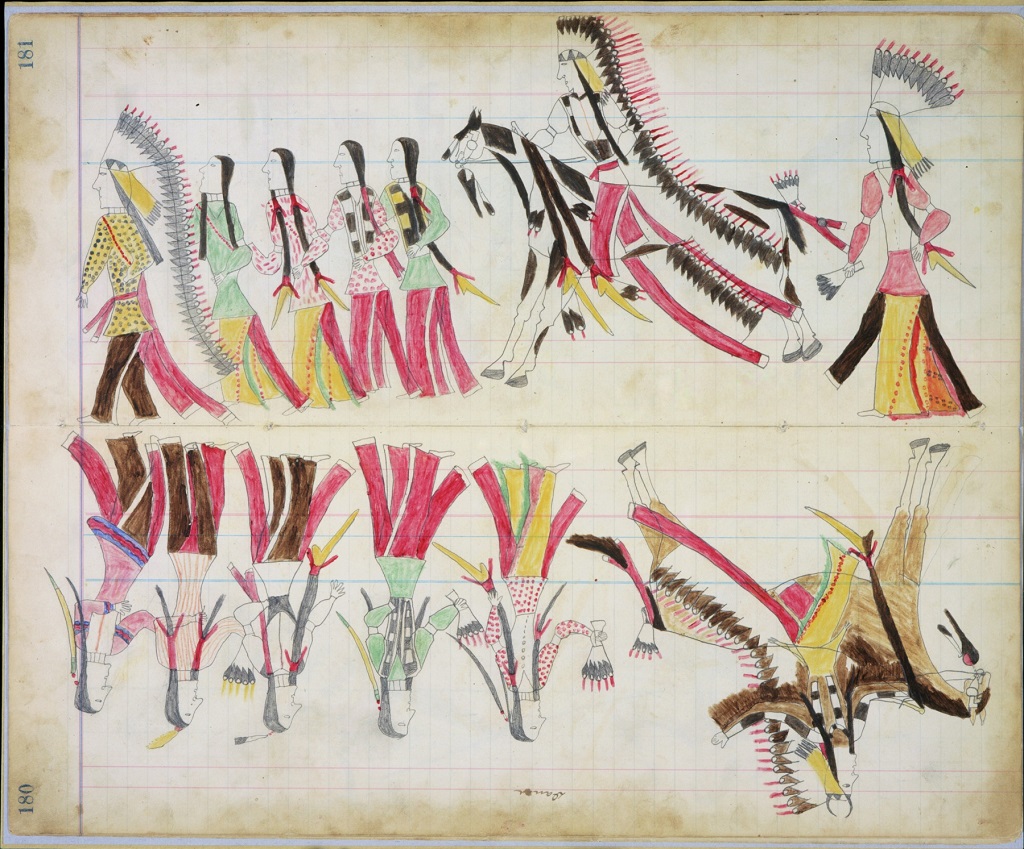Author:
Chicago History Museum Staff
At First Glance
What do you notice first in the painting? Why is your eye drawn there? What do you think is happening in this scene? What do you see that makes you think that? What colors do you see? Why do you think the artist used those colors?
Read to Build Knowledge
Take a few minutes to look at this painting. The top of the picture is filled with fire and smoke. The artist painted the fire with warm colors, such as yellow and orange. She also used black or dark gray in between the flames to represent smoke. The panicked people in the center of the painting are also painted in dark colors and surrounded by flames above them and to their sides. The crowd is made up of men, women, and children. Some are carrying things like sacks and baskets. Others have left their belongings behind. Notice the trunk by itself in the right bottom corner. Why do you think the owner left it there? The people’s clothing and the horse-drawn carriages that they are using hint that this fire took place a long time ago.
The artist included buildings on the sides of the painting. Some of the buildings have jagged lines at the top to show that they are being destroyed by the fire. From looking at these buildings it is hard to tell if they are homes or businesses. But we know one building is a church from its steeple, which looks like a tower, in the distance.
The Great Chicago Fire started in Patrick and Catherine O’Leary’s barn on the West Side of Chicago on October 8, 1871. At that time, the sidewalks and most of the buildings in Chicago were made of wood. The weather didn’t help! It hadn’t rained much in the months before the fire so all that wood was dried out and more likely to catch fire. The night the fire began, the wind was blowing and it quickly spread the flames throughout the city. Although the fire department worked very hard, they could not put out the blaze. Two days later it finally started to rain and the fire ended. By that time, one third of the city had burned down, several hundred people had died, and thousands more had lost their homes. Although many historians have studied the fire, we still don’t know how it started. It is a mystery, even today.
Julia Lemos created this painting called Memories of the Chicago Fire in 1871. Ms. Lemos actually lived through the fire. At the time she lived on the North Side of Chicago with her parents and her five children. Her husband had died and she was a single mother. She worked at a company that printed and sold copies of artworks. After the fire, Julia realized that she had experienced one of the most important events in Chicago’s history so she wrote down what she remembered and she created this painting.
The night the fire began, Ms. Lemos was getting ready to go to sleep and decided to shut her windows. She remembered noticing that there was a strong wind blowing and thinking it would be bad if there were a fire that night. She didn’t know it yet, but the fire had already started in a neighborhood far away. But it was coming toward her. Very early the next morning Ms. Lemos woke up when she heard a rumbling noise. She opened her bedroom window and thought she was dreaming. The whole street was crowded with people! A neighbor told her that the fire was headed toward her home. Ms. Lemos gathered her family together outside, like the families in the painting. Ms. Lemos saw a church steeple tip over in the flames. She wrote about people helping each other and working together during the fire and after it ended. Her family was very lucky. They all survived the fire and then moved to New York, but a year later they returned to Chicago. When she returned, Ms. Lemos was hired again by the company she worked for before the fire.
In 1871 only professional photographers had cameras, and Chicago’s photographers were running for safety, just like everyone else. Since taking photographs took much more time than it does today, there are no photographs of the fire when it was raging. Julia Lemos’s painting and her writing based on these memories of the fire help us understand today what happened during that frightening event. Today these important documents are kept safe at the Chicago History Museum!
Analyze and Interpret
- How does Julia Lemos draw our attention to the flames? What techniques does she use to make the fire look like it is moving or spreading?
- Which way does it look like the fire is moving? Where do you see proof of this in the picture?
- Why do you think the people are gathered in one area? How do you think these people are feeling?
- What do you imagine could have happened just a few minutes before the scene shown here? What do you imagine happened next? What in the artwork supports your answers?
- What title would you give this artwork and why?
- How can people help each other during a time of trouble? Can you find examples of people helping each other in this painting?
- Julia Lemos made her painting 41 years after the fire took place. Why do you think she was able to show so many vivid details in her painting?
For further reading (students)
Chicago History Museum. “The Great Chicago Fire: Chicago is Burning!,” My Chicago, Lesson 3, http://www.chicagohistory.org/mychicago/pdf/lesson3.pdf
Murphy, Jim. The Great Fire. New York: Scholastic Inc., 1995.
For further reading (teachers)
Chicago History Museum. “The Great Chicago Fire & the Web of Memory,” http://www.greatchicagofire.org/
Related video
Tools for Teachers: The Great Chicago Fire through Primary Sources, Part 1

